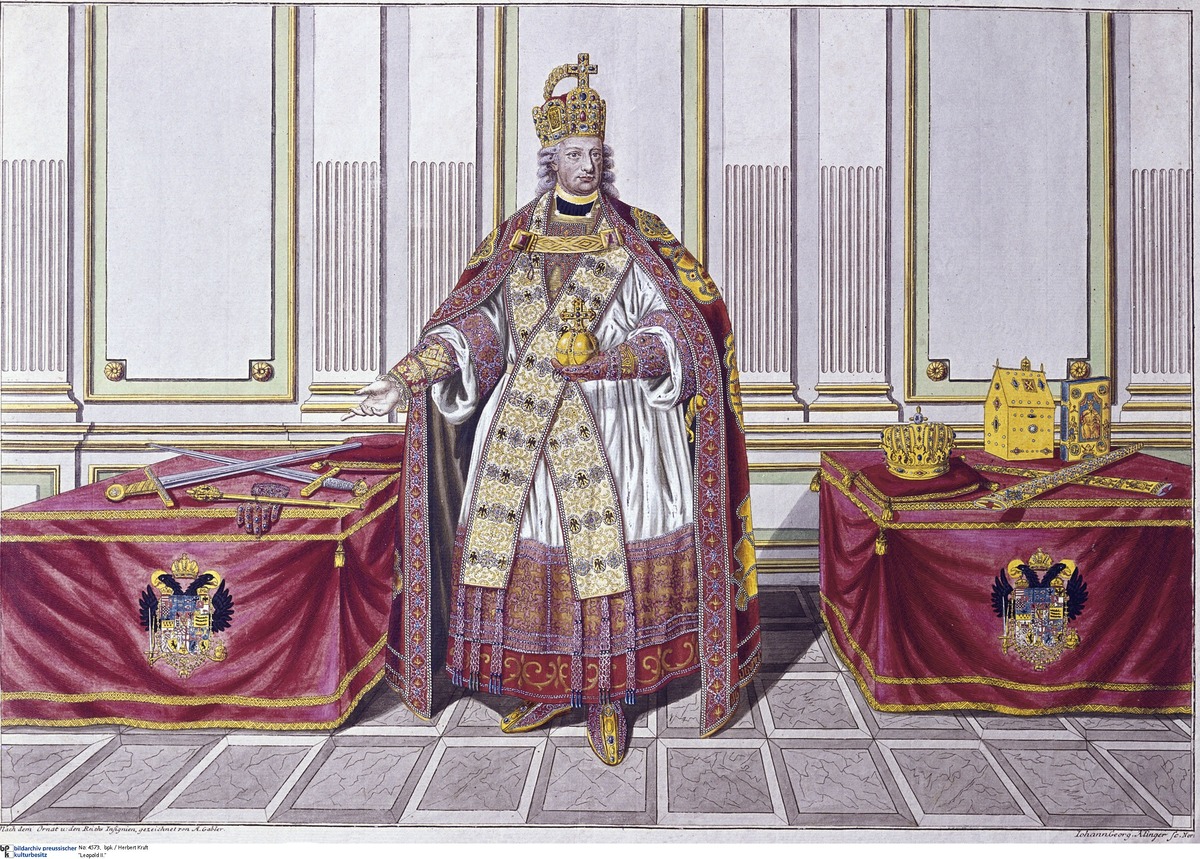Abstract
In 1790, Leopold II (r. 1790-92) succeeded his brother, the reformer
Joseph II (r. 1765-90), as emperor of the Holy Roman Empire. Leopold’s
indebtedness to Enlightenment ideas was already evident in the reforms
he had made as Grand Duke of Tuscany from 1765 to 1790. His short reign
as emperor was shaped by the legacy of his brother’s hasty reforms,
which he partially repealed in the process of suppressing the revolts
they had ignited in Hungary and the Austrian Netherlands. His reign
coincided with the French Revolution, which he did not initially condemn
outright. In 1792, however, he sealed an alliance with Austria’s former
archenemy Prussia to protect the faltering French monarchy, whose queen
was Leopold’s sister, Marie Antoinette. This image shows Leopold II on
October 9, 1790, the day he was crowned emperor in Frankfurt am Main. He
wears coronation regalia and the imperial insignia.
